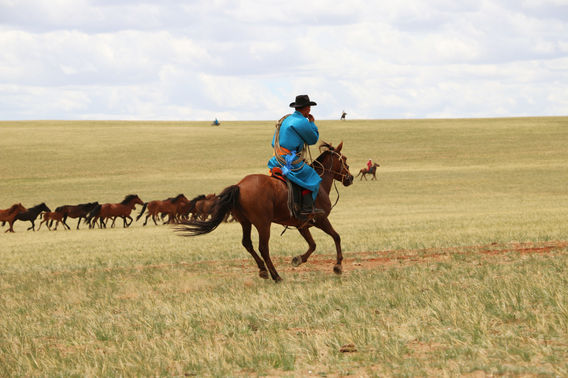
HORSEPOWER
Interactions between China, Mongolia and the steppe 2000-0 BCE
RISE OF HORSEPOWER REVEALED IN NEW NATURE STUDY
It’s an astonishing thought that every domestic horse on the planet today can be traced back to one region of the Russian steppe more than 4,000 years ago.


Whether they’re racetrack champions, pony club companions or giants with the strength to haul heavy loads, their ancestors were the result of an ancient and revolutionary breeding programme that literally changed human history.
That’s the conclusion of a major initiative by an international team of 133 researchers coordinated by Ludovic Orlando of the Horsepower Project.
The study involved sequencing the genomes of hundreds of ancient horse remains.
This allowed them to identify how improved breeding techniques in an area near the Black Sea picked up the pace of horse production.
That in turn meant that domestic horses could “spread like wildfire across the entire Eurasian continent,” according to Ludovic.

The findings are reported in the journal Nature.
The key was the speeding up the rate of reproduction, as Ludovic explains.
“One question that puzzled me for years is about the scale of the production: how could such a substantial number of horses be bred so suddenly from a relatively small domestication area to meet the increasingly global demand by the turn of the second millennium BCE?
“Now we have an answer. Breeders controlled the reproduction of the animal so well that they almost halved the time interval between two generations.
“Put simply, they were able to accelerate the breeding process, effectively doubling their production rate.”

The research team combined radiocarbon dating with ancient DNA sequencing to develop a detailed chronology showing how genetic transformations coincided with the emergence of equestrianism.
The research team scrutinized their data for three indicators of horse husbandry.
First, they traced when the progenitors of modern domestic horses began to spread outside their native domestication homeland.


Next, they reconstructed horse demography throughout the third millennium BCE to precisely date the earliest signs of breeding and large-scale production of horses.
Then they uncovered evidence of significant shifts in the horse reproductive lifespan, indicating deliberate manipulation of animal reproduction by early breeders.
The remarkable alignment of all three lines of evidence around 4,200 years ago strongly suggests that these domestic horses – known as ‘dom2’ - were produced in sufficiently large numbers to sustain a growing demand across the continent.
“Therefore the date of ~4,200 years ago,” says Ludovic, “marks the true onset of horse-based mobility as we recognize it”.
It was a moment of profound significance for human societies.
Horse-based mobility became the fastest mode of terrestrial transport for next few thousand years - until the advent of mechanical engines in the 20th century.


Ludovic says the evidence supports two separate domestications in horses.
“The first, occurring around ~5,500 years ago, aimed to address the decline in horse populations and provide sustenance for populations inhabiting the steppes of Central Asia.
“The second led to the domestic horse as we know it around ~4,200 years ago. This one truly transformed human history by providing fast mobility for the first time.”
The paper challenges a theory that massive human migrations from the steppe around 5,000 years ago involved these domesticated horses.
Studies of ancient human genetics have shown movements of people - often thought to be speakers of a proto-Indo-European language - taking place during the first half of the third millennium BCE.
Since the map of horse genetics only started to change much later, the research team concludes that these human migrations couldn’t have involved horseback riding as a driving force.
For Chris Gosden, a fellow Horsepower principal investigator who was not involved in the paper, the research is a significant advance in understanding the relationship between people and horses.
“Across the enormous land mass of Eurasia the domesticated horse helped shrink time and space, so that the vast steppes became smaller in terms of travel. There are claims from human genetics of groups moving out of the steppe into Europe around 2500 BCE and it was natural to think that this movement was aided by horses.


“But we can now see that horse domestication occurred after the movements linked to the eastern pastoralists labelled as the Yamnaya. The horse was not involved in Yamnaya movements and the nature of their pastoralism, based on the keeping of sheep, goat and cattle, would have been very different to later forms as people were on foot.”
“Much more will be learned of the history of the horse over the next few years, as Orlando’s team move from outlining the big picture to more detailed accounts of breeding, herding and human use. In learning more about the history of the horse we will discover more about ourselves.”
Ursula Brosseder, also a Horsepower PI, described the paper as “very convincing” that the human migrations 5,000 years ago did not involve horses.
“Humans have migrated throughout history, and they did that very often or even most of the time without the horse. You do not need a horse for a migration process.”
The paper was published on June 6th 2024 in the scientific journal Nature.
More details here: https://cagt.cnrs.fr/




